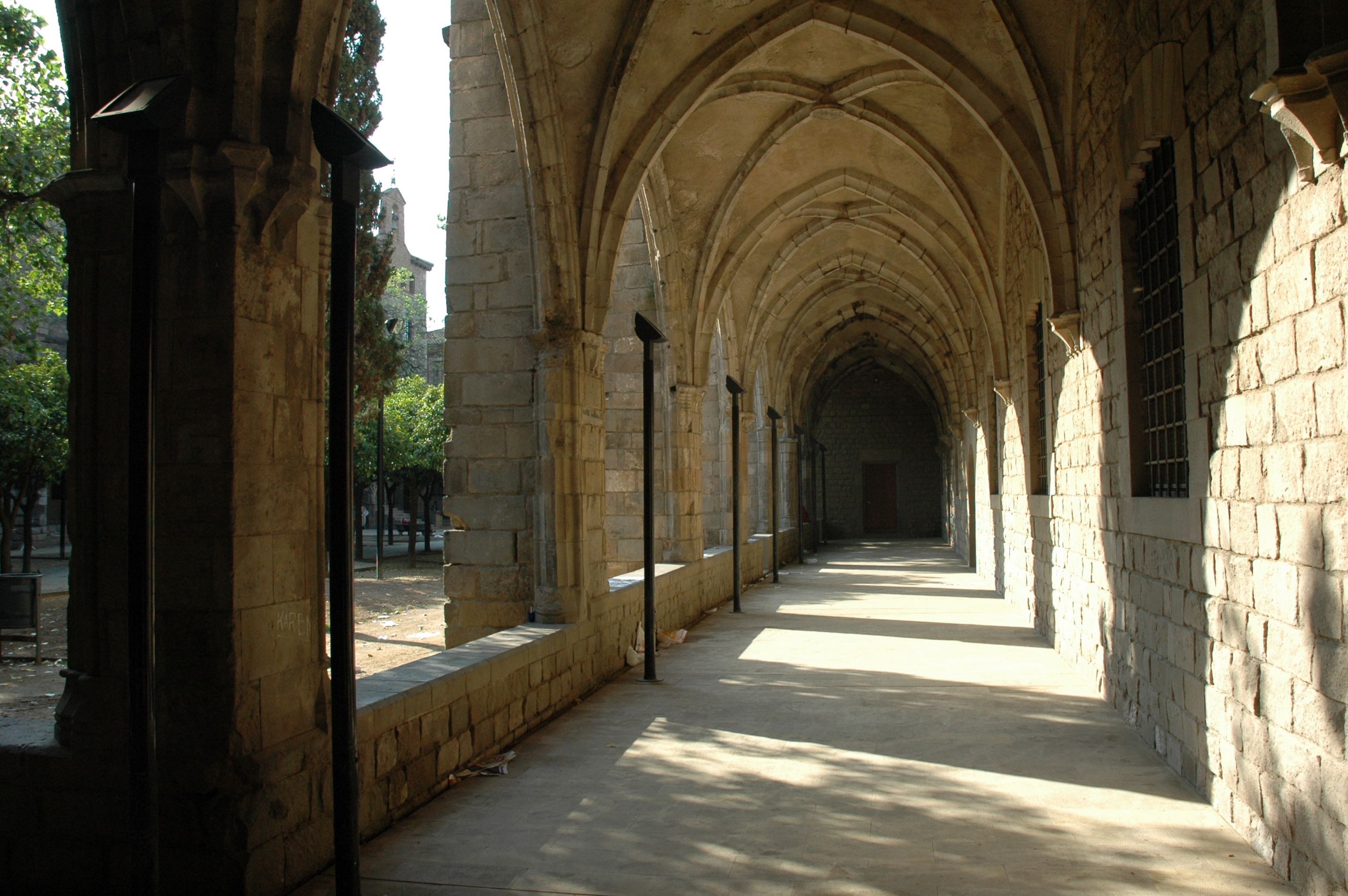Old Hospital de la Santa Creu, Barcelona on:
[Wikipedia]
[Google]
[Amazon]
 The Old Hospital de la Santa Creu is a 15th-to-18th-century building complex in
The Old Hospital de la Santa Creu is a 15th-to-18th-century building complex in
 In 1703, Antoni Viladomat, one of the most significant Catalan painters of the Baroque period painted the chapel of Saint Paul.
In 1763, in front of the Casa de Convalescència, the College of Surgeons (later Medical Faculty and now Royal Academy of Medicine of Catalonia) was built, by
In 1703, Antoni Viladomat, one of the most significant Catalan painters of the Baroque period painted the chapel of Saint Paul.
In 1763, in front of the Casa de Convalescència, the College of Surgeons (later Medical Faculty and now Royal Academy of Medicine of Catalonia) was built, by
File:090511-Barcino-SPonctius 024.jpg, The arms of the hospital, on the chapel wall, carved by Pere Costa
File:Biblioteca de Catalunya - Nau de tramuntana.JPG, Northern wing of the Hospital (1406-1509)
File:Biblioteca de Catalunya - Sala interior.JPG, Eastern hall
File:Biblioteca de Catalunya - sala viquitrobada.JPG, Ground-floor Gothic chamber (15th century)
File:090511-Barcino-SPonctius 022.jpg, The chapel (17th century)
File:Casa de Convalescència - IEC.JPG, Courtyard of the Casa de Convalescència (17th century)
File:Reial Acadèmia de Medicina de Catalunya.JPG, Former College of Surgeons (18th century)
Hospital de la Santa Creu
- history and visitor information {{Authority control Buildings and structures in Barcelona Libraries in Barcelona Tourist attractions in Barcelona
 The Old Hospital de la Santa Creu is a 15th-to-18th-century building complex in
The Old Hospital de la Santa Creu is a 15th-to-18th-century building complex in Barcelona
Barcelona ( , , ) is a city on the coast of northeastern Spain. It is the capital and largest city of the autonomous community of Catalonia, as well as the second most populous municipality of Spain. With a population of 1.6 million within ci ...
, which formerly served as a hospital and hospice and currently is the home of the National Library of Catalonia
The Library of Catalonia ( ca, Biblioteca de Catalunya, ) is the Catalan national library, located in Barcelona, Catalonia, Spain. The primary mission of the Library of Catalonia is to collect, preserve, and spread Catalan bibliographic producti ...
, the Institute for Catalan Studies, the former College of Surgeons, and an art school. It has been declared a Historic and Artistic Landmark of National Interest.
History
In 1401 the Council of One Hundred (Consell de Cent
The Consell de Cent (, meaning in English "Council of One Hundred") was a governmental institution of Barcelona. It was established in the 13th century and lasted until the 18th century.
Its name derives from the number of its members: one hundr ...
), the former government of Barcelona, decided to build the Hospital de la Santa Creu merging and centralizing six hospitals in the city. The complex, designed by Guillem d'Abriell, was planned on a grand scale in the form of four two-story wings surrounding a central patio. The east wing (1406), north wing (1406-1509) and the west wing (1509) were built. In spite of the elapsed time they all have the same layout: ground floor covered with curved vaults that are very low with brick plates and upper floor with a double-sloped wooden beam on lightly pointed diaphragm arches. In front of the three wings the galleries of the cloister were arranged, with rib vault (begun in 1406 by Guillem d'Abriell).
During the 16th and early 17th centuries, one of the four wings was demolished, two more wings were added and another court was built adjacent to the first, and this still retains the monumental stairs that now give access to the Biblioteca de Catalunya
The Library of Catalonia ( ca, Biblioteca de Catalunya, ) is the Catalan national library, located in Barcelona, Catalonia, Spain. The primary mission of the Library of Catalonia is to collect, preserve, and spread Catalan bibliographic producti ...
.
Ventura Rodríguez
Ventura Rodríguez Tizón (July 14, 1717 – September 26, 1785) was a Spanish architect and artist. Born at Ciempozuelos, Rodríguez was the son of a bricklayer. In 1727, he collaborated with his father in the work at the Royal Palace of Aranj ...
.
By the end of the 19th century, the hospital had become outdated because of the growth of the city and advances that had been made in medicine and hygiene, so it was moved to a new site at the Hospital de Sant Pau, built between 1902 and 1930.
A month before the hospital was closed down in 1926, Antoni Gaudí died here three days after he was hit by a tram.
In 1926 the building was purchased by the City Council
A municipal council is the legislative body of a municipality or local government area. Depending on the location and classification of the municipality it may be known as a city council, town council, town board, community council, rural counc ...
, who began restoring it. It now houses the Biblioteca de Catalunya (since 1939), the Institut d'Estudis Catalans
The Institute for Catalan Studies ( ca, Institut d'Estudis Catalans, ), also known by the acronym IEC, is an academic institution which seeks to undertake research and study into "all elements of Catalan culture". It is based in Barcelona, Catalon ...
(since 1931), the Escola Massana art school (since 1935) and two public libraries run by the Diputació de Barcelona. On June 3, 1931 it was declared a Monument of National Historic and Artistic Interest.
Architecture
The oldest part of the Hospital de la Santa Creu is an impressive example of Catalan civil-Gothic architecture. The interior boasts several large vaulted halls. Also of note is the cross vaulted Galeria del pati, which borders the inner garden, and the arched entrance to the library at the patio, built in the sixteenth century.See also
* Museu Tèxtil i d'IndumentàriaReferences
External links
Hospital de la Santa Creu
- history and visitor information {{Authority control Buildings and structures in Barcelona Libraries in Barcelona Tourist attractions in Barcelona